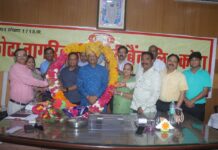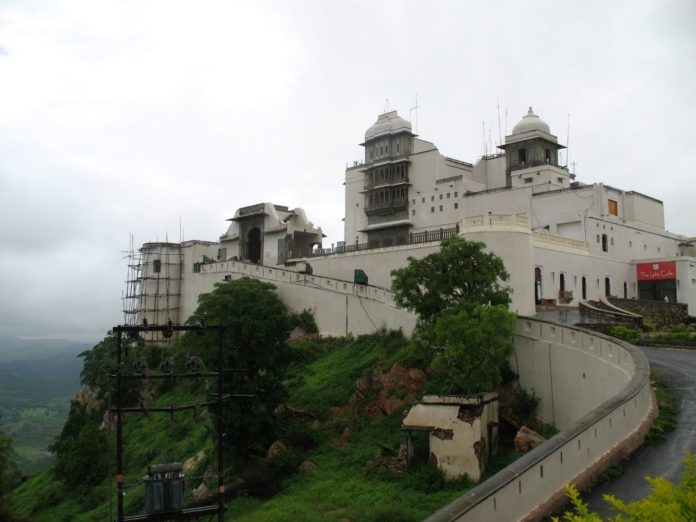
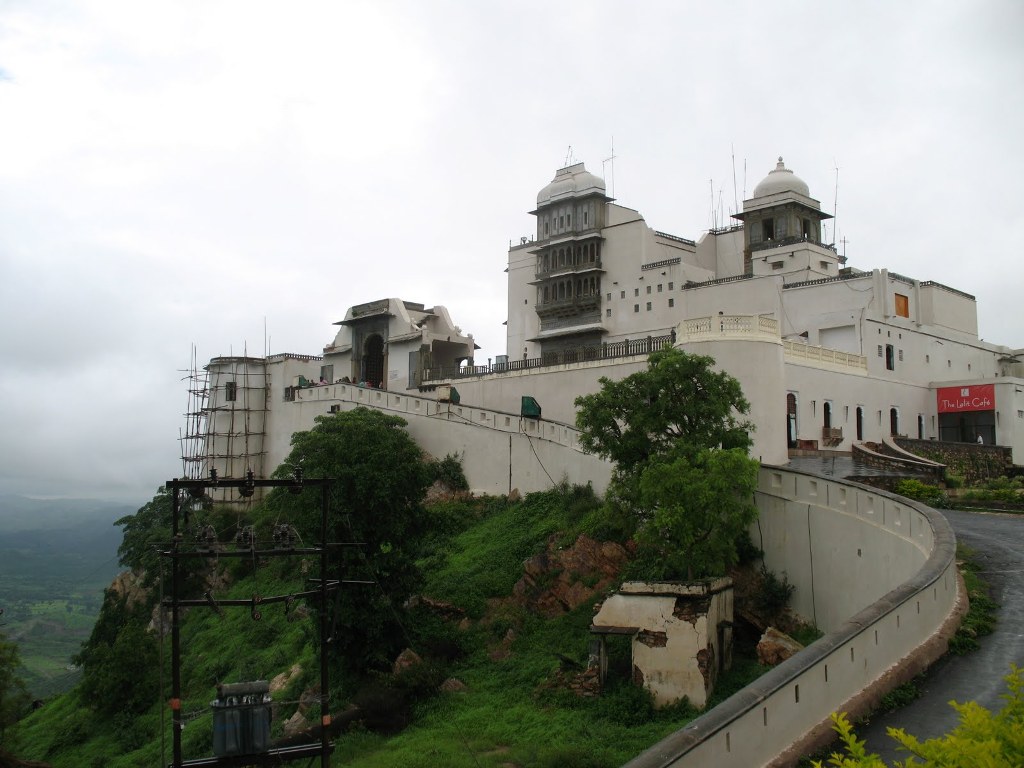
Nestled amidst Babul, Keekar and Banyan tree forests, in the protective sanctuary of the ancient Aravalli hills, the beautiful Sajjangarh Palace is no less than Walt Disney’s fairytale castles, where pretty princesses are held captive by monstrous dragons, awaiting their knights in shining armors. The melancholy castle is located at an elevation of 3,100 feet above sea level on the Badsdara peak of the Aravallis in Udaipur. This 18th century masterpiece was initially constructed for astronomical studies by Maharana Sajjan Singh. In subsequent years, the royals started using it as a hunting lodge.
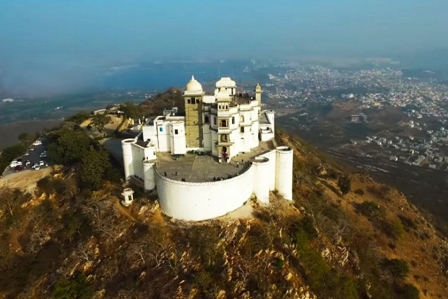
Quick Facts about Sajjangarh Palace Udaipur
- The Palace was used by the ‘Cheetah Girls’ (a girl band) for shooting a dance sequence for the famous English song ‘Dance Me if You Can’.
- It was ‘temporary residence’ of exiled Afghan prince Kamal Khan, the infamous villain in 1983 James Bond movie Octopussy—a Hollywood magnum opus.
By virtue of its location, it comes under the administration of Rajasthan forest department. Over the years, the 132-year-old fort unfortunately succumbed to weather damages. The palace is crumbling by the day due to negligence of Rajasthan government. The structure is in such poor condition that after rains, the forest officers had to tie collapsing pillars and walls with a rope to hold them in place.
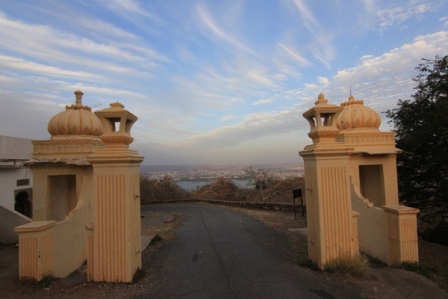
Such was the case with Deeg and Weir Forts (Bharatpur), Garh Palace (Jhalawar) and Sambhar (Jaipur)—landmarks that were restored by the present Raje government in last 3 years. Now, the BJP government has taken Sajjangarh Palace’s restoration upon itself. Rajasthan forest department sanctioned Rs 6 lakh for preparing Sajjangarh Palace DPR (Detailed Project Report). The estimated cost of the palace restoration is Rs 2 crores that will be sanctioned by Mr. C S Rajan, the Chief Secretary of Rajasthan.
The Majestic Monsoon Palace Houses an Ingenious Water Collection Unit—a Precursor of Modern Rainwater Harvesting Systems
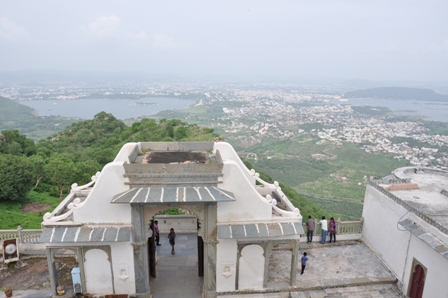
In time, people started calling it the ‘Monsoon Palace’. There’s an interesting story behind the origin of its name. Considering the acute water scarcity prevailing in this region, the Mewar rulers built a unique rainwater harvesting structure on top, which is connected to an underground cistern. The unit stores around 195,500 liters of rainwater, which is the primary source of water supply for natives residing around the castle. Surprisingly, the structure is in working condition and the villagers were supplied with 3 lakh liters of rainwater last monsoons.
White Turrets, Intricate Jharokas & Lush Green Sajjangarh Wildlife Sanctuary Present on the Foothills Creates a Magical Aura Around the Castle…
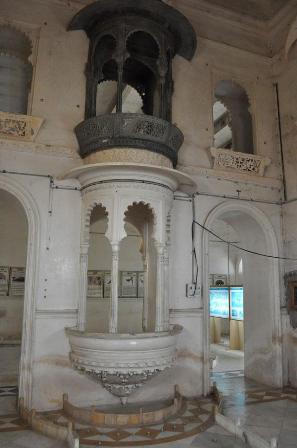
The gorgeous Sajjangarh Fort looms over pristine Fateh Sagar Lake—an eye-catching tourist destination in Udaipur. In evenings, the palace is illuminated by golden-orange light of the setting sun. The views from the ‘Jharokas’ (windows) is so breathtaking that the tourists tend to overlook its dilapidated state.
A 9-storey complex was initially proposed for an astronomical centre at Sajjangarh to monitor cloud activity during monsoons. The grand white marble palace, with its regal turrets, central ballroom, soaring staircase and embellished rooms, served as a resort from 1874 to 1884. Its walls are plastered with lime mortar and the domes, fountains and ceilings are carved with exquisite convoluted motifs.
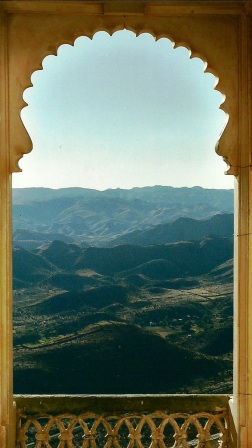
The Palace is Managed by Rajasthan Forest Department, due to Sajjangarh Wildlife Sanctuary Lying Below…
The stunning green Sajjangarh Wildlife Sanctuary encircling the palace spreads over an area of 5.19 kilometers. The ancient hunting grounds were converted into well-protected wild habitat in 1987. The forest hillside is heavily protected by native trees. The reserve is best suited for trekking (starting from Gorilla Point to Bari Lake and Jiyan Sagar), bird watching and nature photography.
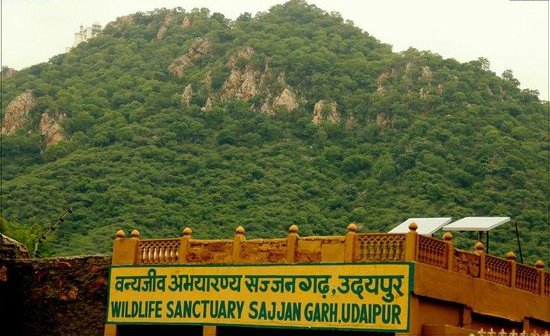
The place accommodates several reptilian species, wild boars, tigers, hyenas, jackals, panthers, nilgais and sambhar deer.
According to Mr. G V Reddy (Chief Wildlife Warden, Rajasthan) the department will prepare the DPR for restoration before monsoons this year. The palace is likely to get back in prim and proper shape by next year. This will give a boost to Rajasthan’s tourism economy for sure.


